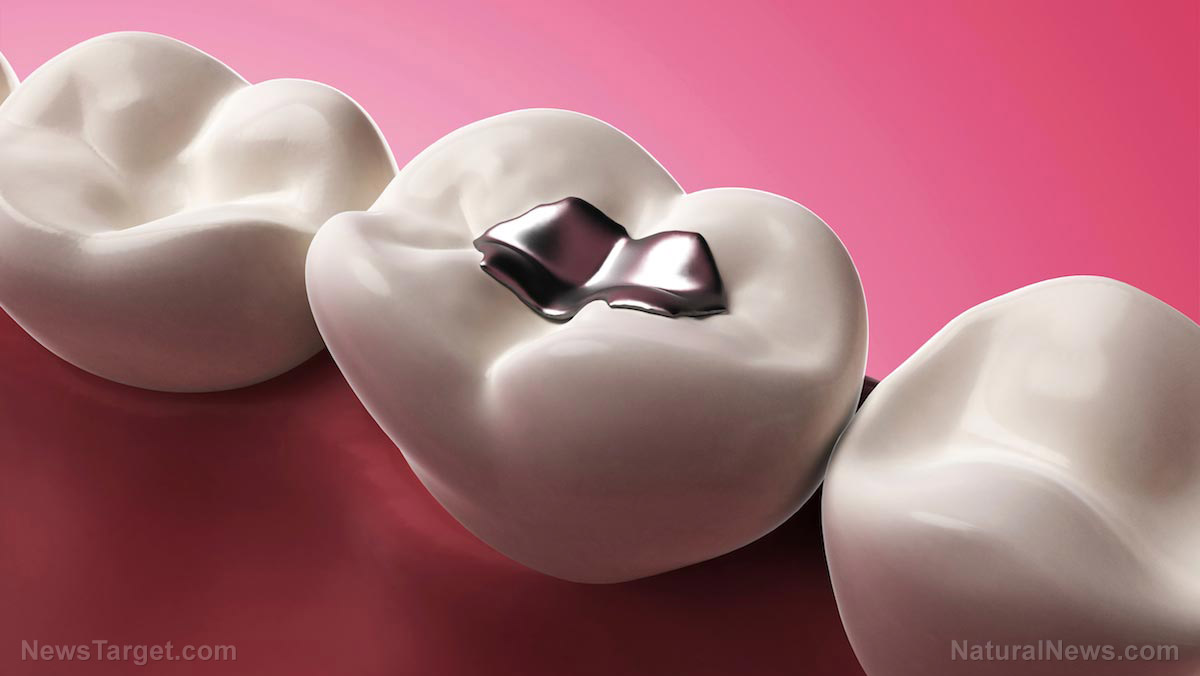The hidden dangers in your mouth: How cavities and gum disease nearly double stroke risk
11/08/2025 / By Ava Grace

- A 20-year study found that people with both gum disease and cavities have an 86 percent higher risk of an ischemic stroke (caused by a clot) compared to those with healthy mouths.
- While gum disease alone raised stroke risk by 44 percent, having both conditions nearly doubled the danger, suggesting a synergistic, multiplicative effect.
- Brain scans revealed that individuals with gum disease were up to 56 percent more likely to have white matter hyperintensities—physical damage to the brain’s wiring that is a precursor to cognitive decline and stroke.
- Harmful oral bacteria enter the bloodstream, triggering body-wide inflammation that damages arteries and contributes to blockages in both the brain and heart.
- The research mandates that dental health must be integrated into overall health assessments, as proper brushing, flossing and dental checkups are vital for protecting the brain and heart.
In a medical revelation that should fundamentally reshape public health priorities, groundbreaking research has confirmed that common oral health issues, long treated as mere inconveniences, are in fact powerful drivers of life-altering neurological damage. Two landmark studies published in the journal Neurology Open Access have established that the combination of cavities and gum disease dramatically increases the risk of ischemic stroke and causes measurable, significant brain damage. This research, tracking nearly 6,000 adults for over two decades, provides the most compelling evidence to date that the state of one’s mouth is inextricably linked to the health of one’s brain.
The research, embedded within the long-running Atherosclerosis Risk in Communities (ARIC) study, followed 5,986 participants for a median of 21 years. Scientists categorized individuals into three distinct groups: those with good oral health, those with only periodontal (gum) disease, and those suffering from the combination of both gum disease and dental caries or cavities. The results revealed a disturbing health gradient that no informed citizen can afford to ignore.
The stroke incidence rates painted a stark picture. Merely 4.1 percent of the healthy mouth group suffered a stroke. That number climbed to 6.9 percent for those with gum disease alone. However, for the group with both conditions, the rate skyrocketed to a shocking 10 percent. After meticulously accounting for variables like age, smoking and other cardiovascular risks, the data showed that individuals with this dual oral health burden faced an 86 percent higher risk of an ischemic stroke—the kind caused by a clot blocking blood flow to the brain.
The cardiovascular toll extends beyond stroke
The peril was not confined to the brain. The same cohort experienced a 36 percent higher risk of major adverse cardiovascular events, including heart attacks, compared to their peers with healthy mouths. The risk amplification for specific stroke subtypes was even more pronounced. For those with both cavities and gum disease, the risk of a thrombotic stroke, caused by a clot forming in a brain artery, increased by a staggering 127 percent. The risk of a cardioembolic stroke, where a clot travels from the heart to the brain, jumped by an alarming 158 percent.
A companion study moved beyond statistical risk to provide tangible, physical proof of harm. By reviewing MRI brain scans from over 1,100 participants, researchers discovered that individuals with periodontal disease were up to 56 percent more likely to have white matter hyperintensities. These are bright spots visible on scans that indicate damage to the brain’s wiring. This type of damage is a known precursor to memory problems, impaired thinking, balance issues and an elevated vulnerability to stroke.
The connection between oral disease and systemic damage operates through pathways that mainstream medicine has been slow to fully acknowledge. The primary culprit is chronic systemic inflammation. Periodontal disease involves a constant assault by harmful bacteria that trigger a persistent inflammatory response throughout the body. These inflammatory agents circulate in the bloodstream and directly contribute to atherosclerosis—the hardening and narrowing of the arteries that supply the brain and heart.
Furthermore, bacterial invasion of the bloodstream is a regular occurrence in those with poor oral health. Pathogens responsible for gum disease have been found inside the arterial plaques that clog carotid and coronary arteries. Streptococcus mutans, the primary bacterium causing cavities, has been detected in heart valves and arterial plaques. Every time a person with infected gums or decayed teeth chews, these dangerous microbes can enter the circulatory system, seeding potential disaster.
Historical context and a path forward
For decades, the dental and medical fields have operated in separate silos, with the mouth often dismissed as unrelated to overall systemic health. This new research, built upon twenty years of rigorous data, shatters that outdated paradigm. It forces a reckoning with the fact that oral hygiene is not a matter of cosmetic concern or localized comfort, but a critical component of cardiovascular and neurological prevention.
The findings suggest that the combination of gum disease and cavities creates a synergistic effect, multiplying the risk beyond either condition alone. While gum disease by itself increased stroke risk by 44 percent, the addition of cavities nearly doubled the danger. This demonstrates that these common conditions work in concert to wage a destructive war on the body’s vascular systems.
“Oral hygiene is critically important for healthcare because the mouth is a gateway to the rest of the body, and poor oral health is directly linked to serious systemic conditions like heart disease, diabetes and Alzheimer’s,” said BrightU.AI‘s Enoch. “It is not just about aesthetics, but is a crucial component of overall health. Therefore, taking care of your mouth is essential for preventing these broader health issues.”
In the modern quest for longevity and cognitive vitality, the simple, daily acts of brushing, flossing and seeing a dentist are not mere chores. They are among the most accessible and powerful forms of self-preservation, guarding not just a smile, but the integrity of the human brain itself. The science has spoken; it is now a matter of whether the public and the medical establishment will truly listen.
Watch and learn how to heal teeth and gums naturally.
This video is from the Follower of Christ777 channel on Brighteon.com.
Sources include:
Submit a correction >>
Tagged Under:
brain artery, clot, gum disease, heart attack, neurological damage, oral health issues, prevention, remedies, research, thrombotic stroke
This article may contain statements that reflect the opinion of the author
RECENT NEWS & ARTICLES
BrainFunction.News is a fact-based public education website published by Brain Function News Features, LLC.
All content copyright © 2018 by Brain Function News Features, LLC.
Contact Us with Tips or Corrections
All trademarks, registered trademarks and servicemarks mentioned on this site are the property of their respective owners.




















